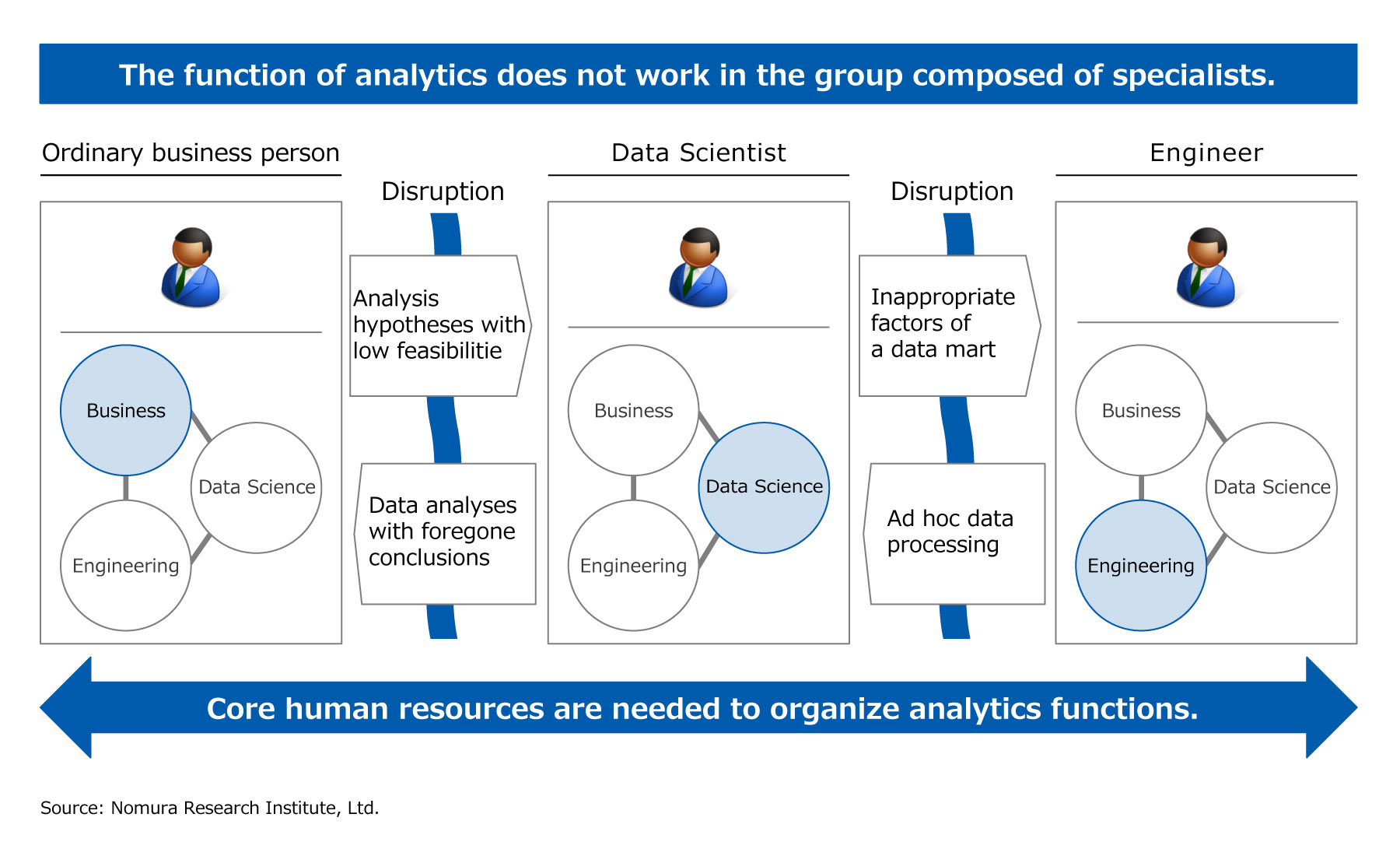
Analytics as a Source of Competitive Advantage for Companies―Two Key Points for Producing Results
“Analytics” is a keyword that’s getting a lot of attention from companies today. Previously, we saw the business world focus on “big data”, another keyword representing the existence of mass data that can be leveraged on a global scale. Currently, interest among businesses is shifting toward the question of how this mass data can be put to use for management purposes. We spoke with Shigeki Natori, an NRI member working to help companies reinforce their competitive advantage using analytics, about the keys to producing results.
Using Data to Enhance the Quality of Decision-Making
Analytics refers to the use of various types of data to enhance the quality of decision-making done in a wide range of domains, including corporate management, business projects, and operations.
For instance, a certain industrial infrastructure company has found that by leveraging its equipment sensor data, it’s now able to make equipment investment decisions that are better suited to its actual operating conditions than ever before. This increased sophistication in decision-making makes a dual contribution, helping the company to provide its customers with stable services and to optimize its costs. At another consumer services company, the use of large amounts of data has made it possible not only to recommend the ideal products and services to customers who visit its stores, but also to make suggestions that anticipate any concerns that customers may have, thereby eliminating any discontent and raising customer satisfaction.
With other possible applications including raising operational productivity, placing personnel in more appropriate posts, and predicting risks, it’s clear that analytics has the potential to be used for myriad purposes.
Letting Companies “Try Things Out”
One factor behind the growing level of interest in analytics is that for many companies, analytics initiatives are an easier undertaking than ever before.
Companies now have far more options available as far as the data they can use, while analytics tools, using open source computational languages such as R or Python, now make it possible to employ the latest algorithms without incurring costs. Meanwhile, analytics platforms allow companies to take advantage of “pay-as-you-go” cloud services in fashioning analytics environments where mass data can be processed with low initial investments.
I think the fact that technological progress has made it realistically possible for companies to more freely “try things out” is a significant recent development.
How to Get Results (1): Specify Use Scenarios
Another aspect of analytics is that when implemented properly, it can enhance a company’s competitiveness, but if not done correctly it can easily lead to missteps. According to one questionnaire survey, nearly 40% of companies that are seeking to make the best use of their data have been unable to achieve their desired results.
There are two key points when it comes to getting results with analytics. The first is that you have to envision specific scenarios for how data is to be used. With companies recently having gained more options in the kinds of data they can use, it’s become very common for them to begin their study by sorting and synthesizing it, but ultimately the important thing is what you aim to accomplish by using data. The key is to begin by understanding your business challenges, and to concretely define the purposes and use scenarios for your data early on in the study process.
How to Get Results (2): Cultivate Core Personnel
Another key point is the need to systematically cultivate core person for handling analytics at your company, and to do so from the initial stages of study.
Generally speaking, analytics requires three different skill sets: business, data science, and engineering. It’s extremely rare for personnel to have all three of these, but for core personnel they’re essential.
Procuring human talent who excel at one or another of these skillsets is a relatively easy to do, but securing personnel who are well-versed with your company’s particular business is no simple thing. Based on past experience, the approach that I most recommend is that when launching PoC (Proof of Concept) testing on analytics, you should choose and engage core personnel candidates who have a broad business perspective and don’t have an aversion to math or statistics, and then have them further their expertise through actual activities.
When it comes to putting together a study team, since analytics requires a broad range of expertise, it’s not good to have people who are too self-sufficient or who delegate all the decision-making responsibility to others. I think that moving forward with this one step at a time, accumulating knowhow on the use of data, and fostering a culture for it as an organization will lead to greater competitiveness for your company in the future.

NRI’s Principal
NRI’s Principals have high level of expertise in specific markets or solutions.
As leading consultants, they have been leading innovations for society and NRI’s clients.
NRI’s Principals create new businesses, commit to clients and have responsibilities to solve our client’s issues.
Profile
-
Shigeki Natori
* Organization names and job titles may differ from the current version.